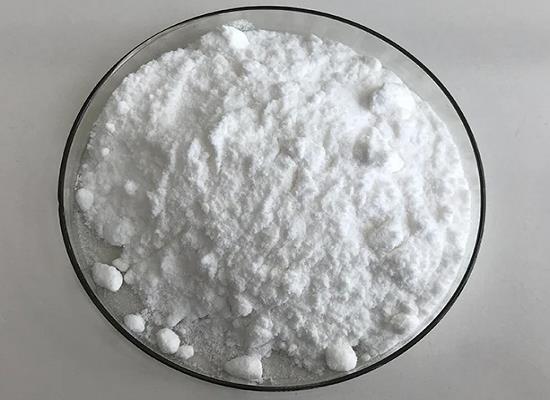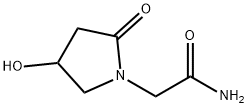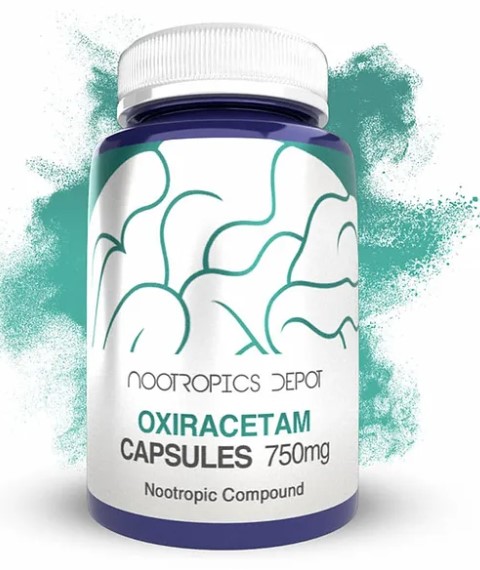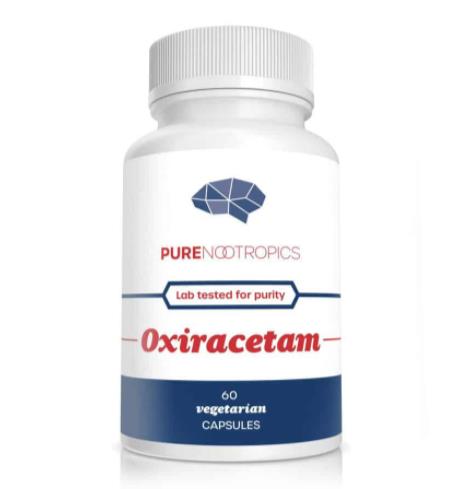Oxiracetam: Overview, Pharmacokinetics, Tolerability and Safety
General Description
Oxiracetam, a popular nootropic drug, has shown beneficial effects on cognitive impairments and cerebrovascular issues. Studies suggest that the active enantiomer, (S)-oxiracetam, may offer increased efficacy and fewer adverse effects compared to the racemic mixture. Pharmacokinetic studies revealed dose-dependent behavior with minimal impact from food. The safety profile of (S)-oxiracetam is favorable, with no serious adverse events reported in single and multiple dose studies. Common adverse events were mild, indicating promising clinical use potential for (S)-oxiracetam.

Figure 1. Oxiracetam
Overview
Oxiracetam is a popular nootropic drug that is commonly used to treat cognitive impairments and has shown beneficial effects on cerebrovascular impairments and multi-infarct dementia. It is a cyclic derivative of γ-aminobutyric acid (GABA) and belongs to the racetam group of drugs. The main mechanism of action of oxiracetam is believed to involve directly influencing energy metabolism in the brain. In clinical practice, oxiracetam is typically used as a racemic mixture of both (S)-oxiracetam and (R)-oxiracetam. However, the pharmacological activity of the drug is predominantly associated with only one enantiomer. Studies suggest that using the active enantiomer alone, particularly (S)-oxiracetam, may lead to increased efficacy, simplified pharmacokinetics, and reduced drug-drug interactions and adverse effects. (S)-oxiracetam, in particular, has been found to have a higher absorption rate, slower elimination rate, and the ability to induce long-term synaptic potentiation in rat hippocampal slices. It has also demonstrated the potential to reverse impairments in learning and memory induced by certain substances like scopolamine. These findings suggest that (S)-oxiracetam could be the primary active enantiomer responsible for the effects of oxiracetam. 1
Pharmacokinetics
Oxiracetam is a cognitive enhancer that has been studied for its pharmacokinetics in a single-ascending-dose study. The study found that there was almost no chiral transformation occurring in (S)-oxiracetam, as the concentrations of (R)-oxiracetam detected in the 400 mg (S)-oxiracetam group were below the lower limit of quantification. The 90% confidence intervals of the geometric mean ratios for Cmax, AUC0-t, and AUC0-∞ were within the range of 80% to 125%, indicating no significant difference in the pharmacokinetics between the two formulations (400 mg (S)-oxiracetam and 800 mg oxiracetam) and between (S)-oxiracetam and (R)-oxiracetam. The pharmacokinetic parameters such as Cmax, AUC0-t, and AUC0-∞ were dose-dependent, but Cmax and AUC0-∞ did not show significant changes with dose escalation from 1600 to 2000 mg. Dose-proportionality analysis revealed that Cmax and AUC0-∞ increased in a dose-proportional manner in the range of 400–1600 mg, but the dose proportionality was inconclusive in the 400–2000 mg and 1600–2000 mg dose ranges. Additionally, the study found that food had no effect on the degree of drug absorption but decreased the maximum concentration of (S)-oxiracetam, with a delayed time to maximum plasma concentration under fed conditions. Furthermore, the excretion of (S)-oxiracetam in urine and feces was found to be above 90% within 0–48 hours, with urinary excretion mainly occurring within the first 24 hours. Overall, the pharmacokinetic profile of Oxiracetam indicates dose-dependent behavior and minimal impact of food on drug absorption, providing valuable insights into its clinical use. 2
Tolerability and safety
The tolerability and safety profile of (S)-oxiracetam appears to be favorable. In both the single-ascending-dose (SAD) and multiple-ascending-dose (MAD) studies, (S)-oxiracetam was found to be safe and well tolerated at all study doses, with no occurrences of death, serious adverse events (SAE), or adverse events (AE) of Grade 3 or above. Additionally, there were no dose-dependent AEs or AEs leading to drug discontinuation or interruption. During the SAD study, 18 AEs occurred in 12 subjects (24%), with the most common AEs associated with (S)-oxiracetam being prolonged activated partial thromboplastin time (APTT) and hypertriglyceridemia. In the MAD study, 11 subjects (18.3%) reported 16 AEs, with the most frequently reported AEs associated with (S)-oxiracetam being increased urinary red blood cells and prolonged APTT. Overall, the severity of all AEs was CTCAE Grade 1, with the exception of a few cases of Grade 2 AEs. These findings suggest that (S)-oxiracetam has a favorable tolerability and safety profile, making it a promising candidate for further clinical use. 3
Reference
1. Li W, Liu H, Jiang H, et al. (S)-Oxiracetam is the Active Ingredient in Oxiracetam that Alleviates the Cognitive Impairment Induced by Chronic Cerebral Hypoperfusion in Rats. Sci Rep. 2017;7(1):10052.
2. Zhang T, Tao Y, Pu J, Zhu M, Wan L, Tang C. Safety, tolerability, and pharmacokinetics of oral (S)-oxiracetam in Chinese healthy volunteers: A randomized, double-blind, controlled phase I study. Eur J Pharm Sci. 2024;192:106621.
Related articles And Qustion
See also
Lastest Price from Oxiracetam manufacturers

US $5.00-0.50/KG2025-05-29
- CAS:
- 62613-82-5
- Min. Order:
- 1KG
- Purity:
- 99% hplc
- Supply Ability:
- 500TONS

US $5.00-0.50/KG2025-05-07
- CAS:
- 62613-82-5
- Min. Order:
- 1KG
- Purity:
- 99% hplc
- Supply Ability:
- 500TONS




